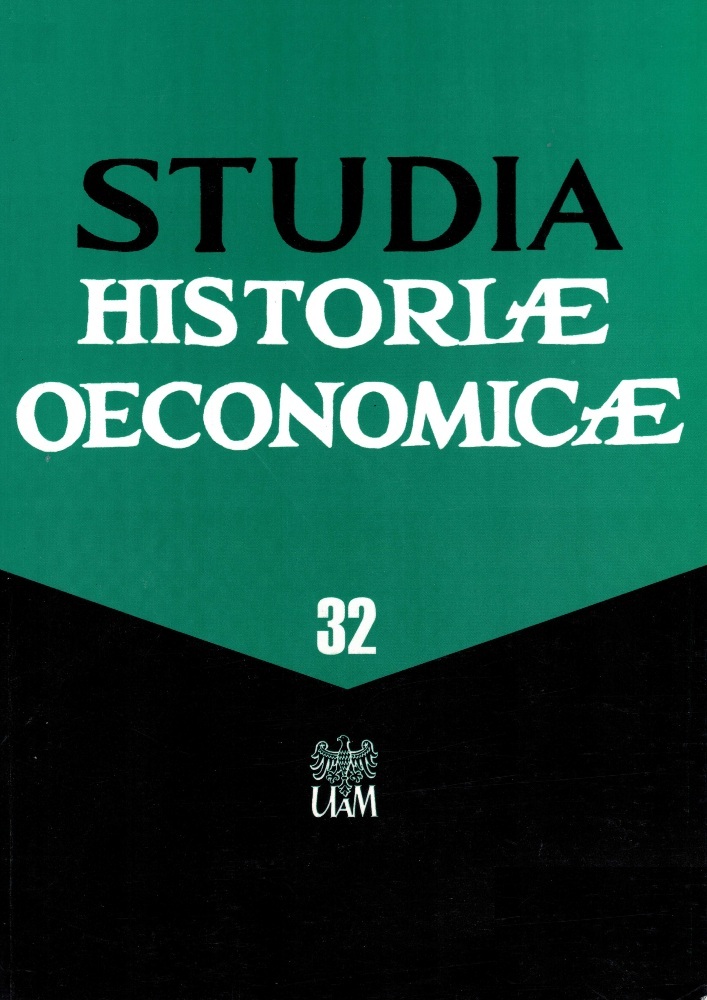Abstract
The Polish National General Exhibition (PWK, also known as “Pewuka”) was held in Poznań in 1929. It was meant to be and it did become a showcase of the economic, industrial, social and cultural achievements of the Polish State, newly reborn in 1918, in the aftermath of the Great War. Staging of the Exhibition coincided with the advent of the economic crisis. Preparations for the Exhibition required an enormous amount of work, and considerable investments were needed to build a suitable infrastructure. Poznań became a huge building site, with many labourers coming to the city in search of employment. After 1929 those labourers added to the large group of the unemployed in the aftermath of the great economic crisis. During the 1930s the unemployment and the related problems aggravated the housing crisis in Poznań. The city authorities attempted to resolve this problem by putting the homeless up in the former exhibition grounds recently vacated following the closure of the Polish National General Exhibition. It was only an interim measure. In search of a more permanent solution, the city started to redevelop allotments or community gardens by building purpose-built residential garden huts or sheds.
References
APP – Archiwum Państwowe w Poznaniu, Akta miasta Poznania, sign. 474/2469; 474/4021; 474/4116; 474/4126; 474/4151; 474/4650; 474/7239.
Narodowe Archiwum Cyfrowe, sign. 1-P-2427-4; 1-U-4226.
Sprawozdanie Zarządu Miasta Stołecznego Poznania za czas 1929 (1930) Poznań: Magistrat Stołeczny Miasta Poznania.
Sprawozdanie Zarządu Miasta Stołecznego Poznania za czas 1930 (1931) Poznań: Magistrat Stołeczny Miasta Poznania.
Sprawozdanie Zarządu Miasta Stołecznego Poznania za czas 1931 (1932) Poznań: Magistrat Stołeczny Miasta Poznania.
Sprawozdanie Zarządu Miasta Stołecznego Poznania za czas 1932 (1933) Poznań: Zarząd Stołeczny Miasta Poznania.
Sprawozdanie Zarządu Miasta Stołecznego Poznania za czas 1933 (1934) Poznań: Zarząd Stołeczny Miasta Poznania.
Sprawozdanie Zarządu Miasta Stołecznego Poznania za czas 1934 (1935) Poznań: Zarząd Stołeczny Miasta Poznania.
Sprawozdanie Zarządu Miasta Stołecznego Poznania za czas 1935 (1936) Poznań: Zarząd Stołeczny Miasta Poznania.
Sprawozdanie Zarządu Miasta Stołecznego Poznania za czas 1936 (1937) Poznań: Zarząd Stołeczny Miasta Poznania.
Sprawozdanie Zarządu Miasta Stołecznego Poznania za czas 1937 (1938) Poznań: Zarząd Stołeczny Miasta Poznania.
Rocznik statystyczny stołecznego miasta Poznania za rok 1928 (1930) Poznań: Magistrat Stołeczny Miasta Poznania.
Rocznik statystyczny stołecznego miasta Poznania za lata 1929–1932 (1932) Poznań: Magistrat Stołeczny Miasta Poznania.
Rocznik statystyczny stołecznego miasta Poznania za lata 1933–1934 (1935) Poznań: Zarząd Miejski w Poznaniu.
Rocznik statystyczny stołecznego miasta Poznania za lata 1934–1935 (1935) Poznań: Zarząd Miejski w Poznaniu.
Rocznik statystyczny stołecznego miasta Poznania za lata 1935–1936 (1936) Poznań: Zarząd Miejski w Poznaniu.
Rocznik statystyczny stołecznego miasta Poznania za lata 1936–1937 (1938) Poznań: Zarząd Miejski w Poznaniu.
Rocznik statystyczny stołecznego miasta Poznania za lata 1937–1938 (1938) Poznań: Zarząd Miejski w Poznaniu.
Bombicki, M.R. (1992) PWK – Powszechna Wystawa Krajowa w Poznaniu 1929. Poznań: Oficyna Wydawnicza Ławica.
Czarnecki, W. (1987) To był też mój Poznań. Wspomnienia architekta miejskiego z lat 1925–1939. Poznań: Wydawnictwo Poznańskie.
Czarnecki, W. (2005) Wspomnienia architekta. Vol. 1: 1895–1930. Poznań: Wydawnictwo Miejskie.
Deja, W. (1983) ‘Ogrody działkowe Poznania na tle warunków przyrodniczych miasta’, Kronika Miasta Poznania, 51(3), pp. 57–62.
‘Drugie “Smutne miasteczko” w budowie’ (1935) Kurier Poznański, 30(363), p. 6.
Grzeszczuk-Brendel, H. (2005) ‘Architektura i budownictwo Poznania w pierwszej połowie XX wieku’, in Jakimowicz, T. (ed.) Architektura i urbanistyka Poznania w XX wieku. Poznań: Wydawnictwo Miejskie, pp. 84–143.
Kodym-Kozaczko, G. (2005) ‘Rozwój Poznania w planowaniu urbanistycznym w latach 1900–1990’, in Jakimowicz, T. (ed.) Architektura i urbanistyka Poznania w XX wieku. Poznań: Wydawnictwo Miejskie, pp. 18–83.
Król, K. (2010) Żebractwo we współczesnej Polsce jako kwestia społeczna. Konin: Wydawnictwo Państwowej Wyższej Szkoły Zawodowej w Koninie.
Maciejewski, H. (1964) Położenie robotników przemysłowych w Wielkopolsce w latach 1929–1939. Warszawa: Książka i Wiedza.
Makowski, E. (1974) ‘Bezrobotni w Poznaniu w latach 1929–1939. Part 1: W okresie kryzysu gospodarczego (1929–1934)’, Kronika Miasta Poznania, 42(1), pp. 35–54.
Makowski, E. (1976) ‘Bezrobotni w Poznaniu w latach 1929–1939. Part 2: W okresie pokryzysowym 1935–1939’, Kronika Miasta Poznania, 44(1), pp. 61–76.
Morawski, W. (2011) Dzieje gospodarcze Polski. Warszawa: Wydawnictwo Difin.
‘Opieka nad ubogimi’ (1929) in Zaleski, Z. (ed.) Księga pamiątkowa miasta Poznania. Dziesięć lat pracy polskiego zarządu Stołecznego Miasta Poznania. Poznań: Magistrat m. Poznania, pp. 429–437.
Pazdera, J. (ed.) (2008) Atlas architektury Poznania. Poznań: Wydawnictwo Miejskie.
‘Pomoc doraźna dla bezrobotnych’ (1934) Nowy Kurier, 45(27), p. 11.
Rataj, M. (1973) ‘Bezdomni’, in Kraszewski, T. and Świtała, T. (eds) Poznańskie wspominki z lat 1918–1939. Poznań: Wydawnictwo Poznańskie, pp. 114–126.
‘Targi Poznańskie’ (1929) in Zaleski, Z. (ed.) Księga pamiątkowa miasta Poznania. Dziesięć lat pracy polskiego zarządu Stołecznego Miasta Poznania. Poznań: Magistrat m. Poznania, pp. 657–672.
Wachowiak, P. (1930) Rys historyczny Powszechnej Wystawy Krajowej w Poznaniu w roku 1929. Poznań: [Drukarnia św. Wojciecha].
Wachowiak, P. (1983) Czasy, które przeżyłem. Wspomnienia z lat 1890–1939. Warszawa: Czytelnik.
Zaleski, Z. (1929) ‘Praca i ubezpieczenia społeczne’, in Zaleski, Z. (ed.) Księga pamiątkowa miasta Poznania. Dziesięć lat pracy polskiego zarządu Stołecznego Miasta Poznania. Poznań: Magistrat m. Poznania, pp. 257–270.
License
Copyright (c) 2014 Marcin Graban

This work is licensed under a Creative Commons Attribution-ShareAlike 4.0 International License.




